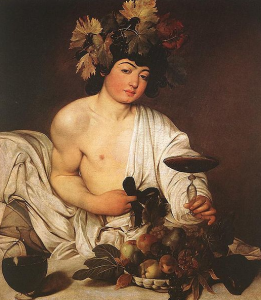 1. Uncorking the bottle before service improves the wine.
1. Uncorking the bottle before service improves the wine.
It's true that aeration before service does improve some wines. But studies show that the neck of a wine bottle is too narrow to allow enough oxygen to get in contact with the wine to make any detectable difference in the taste and aroma. If you want to aerate your wine, decant it. A quick decanting is great for removing the sediment that may have collected in the bottom of your older wines, and a longer decanting is great for young red wines that are still tannic. Learn how to properly decant a bottle here.
2. Serve white wines with chicken or fish and red wines with red meat.
This is one of the oldest and most enduring wine myths. Whether a wine is white or red doesn't have as much to do with which dishes it should be matched with as do the specific qualities and flavors of both the food and the wine. The most important quality to consider when pairing food and wine is balance. A wine should complement the food, accentuating its flavors. It should not overwhelm the food, and the food should not overwhelm it.
For example, buttery salmon cooked over a wood fire would pair nicely with a Chardonnay, which has buttery flavors from aging and oak flavors from being kept in wood barrels. A steak pairs well with an aggressive red wine that's high in tannins and acid: the tannins bind to the proteins in the wine, acting as a natural palate cleanser and refreshing the mouth to enjoy each delectable bite of meat with fresh taste buds. Pairing wine with food is nothing short of an art, with many subtle nuances to consider. To learn more about it, click here.
3. "Reserve" wines are of superior quality.
Although a few countries (Spain is one) have strict regulations governing when winemakers can put "reserve" on the label, the U.S. does not. Originally, "reserve" wines were those the winemakers held back for themselves. Logically, they were of better quality, but mostly they were probably just those wines that best fit the winemaker's personal tastes. Today, "reserve" has no true meaning, and is placed on the label at the discretion of the winemaker. Often, the hiked-up price just isn't justified.
4. Red wine should never be chilled.
Red wines taste best at a temperature between 55º and 65º. The average room temperature? Around 70°. When wine is served too warm, its alcohol flavors jump to the fore, masking the more subtle--and more enjoyable--flavors and aromas. The correct temperature to serve a red wine at depends on the individual wine, but in general, lighter reds should be colder, bolder reds warmer. Read a more detailed explanation of red wine chilling here.
5. Great wines have great "legs."
Many wine drinkers like to begin a tasting by swirling the glass, then holding it up to appreciate the "legs," the little rivulets that run down from a swirled glass's inside rim. Legs that are many in number and thick, meandering slowly down the glass are said to be "great," as in, "This wine has great legs." But many drinkers confuse great legs with great quality. In reality, swirling the glass leaves a small quantity of alcohol and water near the top. The alcohol evaporates first, increasing the surface tension of the leftover water until it gives into gravity and starts flowing back down the glass. Wines with high alcohol contents will have more legs that are thicker and move more slowly. Wines higher in alcohol are generally more viscous, so legs can also clue you in about the wine's viscosity. But they tell you next to nothing about how good it will taste.
6. All German wines are sweet.
Germany does produce a lot of sweet wines, but they make many dry ones too. If you'd like to try a German wine but sweet wines give you a headache, look for the word "trocken" on the label--it means "dry."
7. The more a wines costs, the better it will taste.
This is true only as a very general guideline--it is nowhere near a rule. Though winemakers would love to have you believe that quality of taste is the only thing that dictates price, this is simply not true. Prices depend on many factors, only a few of which relate to taste. Things like how costly the harvest was that year, how pricey the land was, fluctuating grape prices, and even where you purchased the bottle have huge impacts on the price, but not necessarily on what's inside the bottle.
Here's a common phenomenon: a small, unknown vineyard has a great year, and produces a wine of great quality. Because it's not a well-known wine, it's inexpensive. Word gets out about this great deal, and the price of the wine goes way up. But subsequent vintages aren't as good; the wine is relying on the reputation it got during that one good year to justify its high price, but the quality is no longer there. So though high price can reflect high quality, there are many scenarios in which it does not. Do your research and don't be afraid to try new things: there are many great bottles out there for around $10.


